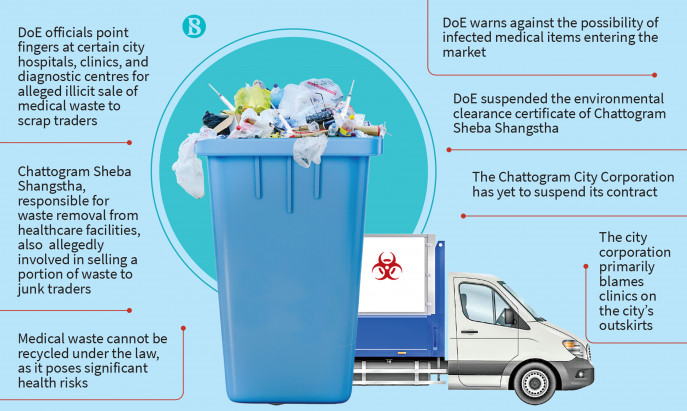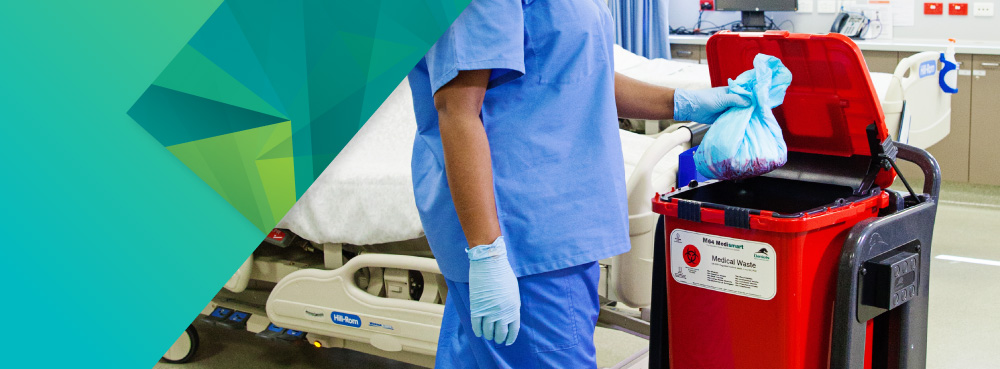Your Relied On Partner: Medical Waste Removal Services Tailored to Your Needs
Your Relied On Partner: Medical Waste Removal Services Tailored to Your Needs
Blog Article
Stay Ahead of Laws: Specialist Recommendations on Medical Waste Disposal
In a globe where the healthcare industry is frequently evolving, it is necessary for medical facilities to remain ahead of guidelines when it comes to the proper disposal of clinical waste. From understanding the different categories of clinical waste to applying the best collection and partition methods, this discussion will certainly provide actionable suggestions and useful understandings to assist facilities stay in advance of regulations in the ever-changing landscape of medical waste disposal.
Understanding Clinical Waste Categories
Understanding clinical waste classifications is vital for proper disposal and management in healthcare centers. Clinical waste describes any waste generated by healthcare activities that may present a hazard to public health or the atmosphere. It is vital to classify clinical waste precisely to ensure its safe handling, therapy, transportation, and disposal.
There are a number of categories of clinical waste that health care centers require to be acquainted with. The most common categories consist of transmittable waste, pathological waste, sharps waste, pharmaceutical waste, and chemical waste. Each classification has specific guidelines and guidelines for its correct monitoring and disposal.
Infectious waste consists of materials polluted with blood or various other physical liquids, such as handwear covers, gowns, and lab societies. Pathological waste describes human tissues, body organs, or body components that need special delivery and disposal. Sharps waste includes used needles, syringes, and other sharp items that can cause injury and send infections. Pharmaceutical waste makes up run out, extra, or polluted medicines that need mindful handling and disposal. Finally, chemical waste consists of solvents, disinfectants, and various other chemical compounds utilized in healthcare centers.
Remaining Up-To-Date With Regulatory Changes
Staying present with regulative adjustments is crucial for medical care centers to ensure conformity and correct monitoring of clinical garbage disposal. medical waste removal services. With guidelines constantly advancing, it is essential for healthcare centers to remain up-to-date to avoid fines, penalties, and possible harm to the setting and public health and wellness
To remain ahead of governing modifications, medical care facilities need to establish a system for surveillance and monitoring updates. This can be done by registering for governing newsletters, participating in conferences and workshops, and proactively taking part in sector associations. In addition, centers must designate a team member or team liable for staying educated and distributing details to pertinent stakeholders.
Regular interaction with regulatory agencies is likewise important. Healthcare centers ought to develop relationships with neighborhood, state, and federal companies to guarantee they know any type of modifications in laws that may affect their waste administration techniques. This can be done with normal conferences, participation in public remark durations, and proactive interaction with governing firms.
Furthermore, medical care centers need to think about partnering with waste monitoring firms that concentrate on clinical garbage disposal (medical waste disposal services with WasteX). These business are typically well-versed in the latest guidelines and can supply advice and assistance to make certain compliance
Executing Appropriate Collection and Partition Methods
To successfully take care of clinical garbage disposal, medical care facilities need to establish proper collection and partition methods based on governing standards. Applying these methods guarantees the risk-free handling and disposal of possibly unsafe materials, shields the atmosphere, and minimizes the threat of injuries and infections to health care workers and the public.
Proper collection and partition methods entail using designated containers and classifying systems. Health care centers need to offer clearly classified containers for various sorts of medical waste, such as sharps, contagious waste, pharmaceutical waste, and non-hazardous waste. These containers need to be color-coded and plainly marked to prevent confusion and promote simple identification.
In addition, healthcare facilities should train their personnel on the correct procedures for gathering and setting apart medical waste. This consists of informing them on the various sorts of waste, the ideal containers to utilize, and the relevance of complying with guidelines and guidelines. Regular training sessions and refresher programs ought to be carried out to ensure that team member continue to be current on ideal techniques.
In addition, health redirected here care centers must develop a system for regular collection and disposal of medical waste. This may include partnering with licensed waste management firms that focus on medical waste disposal. These companies will certainly make sure that the accumulated waste is carried and taken care of in conformity with regulatory needs.
Picking the Right Disposal Approaches

Incineration is one of the most common and reliable methods for throwing away specific kinds of medical waste, such as pathological waste and sharps. It entails the controlled combustion of waste at heats, lowering it to ash. However, incineration can release dangerous contaminants right into the air and add to air contamination.

Chemical treatment includes the usage of chemicals to sanitize and counteract the waste. Microwave treatment utilizes microwave power to heat and disinfect the waste.
Ensuring Compliance Via Documents and Training
After carefully considering the appropriate disposal methods for clinical waste, healthcare centers should ensure conformity with regulations and decrease ecological impact by carrying out effective paperwork and training procedures. This step is important in preserving a safe and lasting environment for both medical care workers and the general public.

Health care workers that handle clinical waste needs to receive appropriate training on waste segregation, handling, and disposal treatments. By offering thorough training, medical care centers can encourage their staff to make educated choices and decrease the danger of wikipedia reference inappropriate waste disposal.
Conclusion
In verdict, remaining ahead of regulations in medical waste disposal is crucial for medical care centers. medical waste removal service. Understanding the various categories of clinical waste, remaining updated with regulatory changes, carrying out appropriate collection and partition approaches, selecting the appropriate disposal approaches, and making certain compliance via paperwork and training are all crucial actions. By complying with these standards, medical care organizations can efficiently take care of her response and get rid of of clinical waste in a liable and risk-free fashion
From understanding the different categories of clinical waste to carrying out the best collection and partition methods, this conversation will certainly provide workable pointers and valuable understandings to aid centers remain in advance of guidelines in the ever-changing landscape of clinical waste disposal. - medical waste disposal services with WasteX
The most usual categories consist of infectious waste, pathological waste, sharps waste, pharmaceutical waste, and chemical waste. Medical care facilities ought to offer clearly labeled containers for different kinds of clinical waste, such as sharps, transmittable waste, pharmaceutical waste, and non-hazardous waste. Healthcare facilities must establish an extensive system to tape-record and track all facets of medical waste disposal, including types of waste generated, amounts, and disposal techniques utilized. Healthcare workers that take care of clinical waste ought to obtain suitable training on waste segregation, dealing with, and disposal procedures.
Report this page